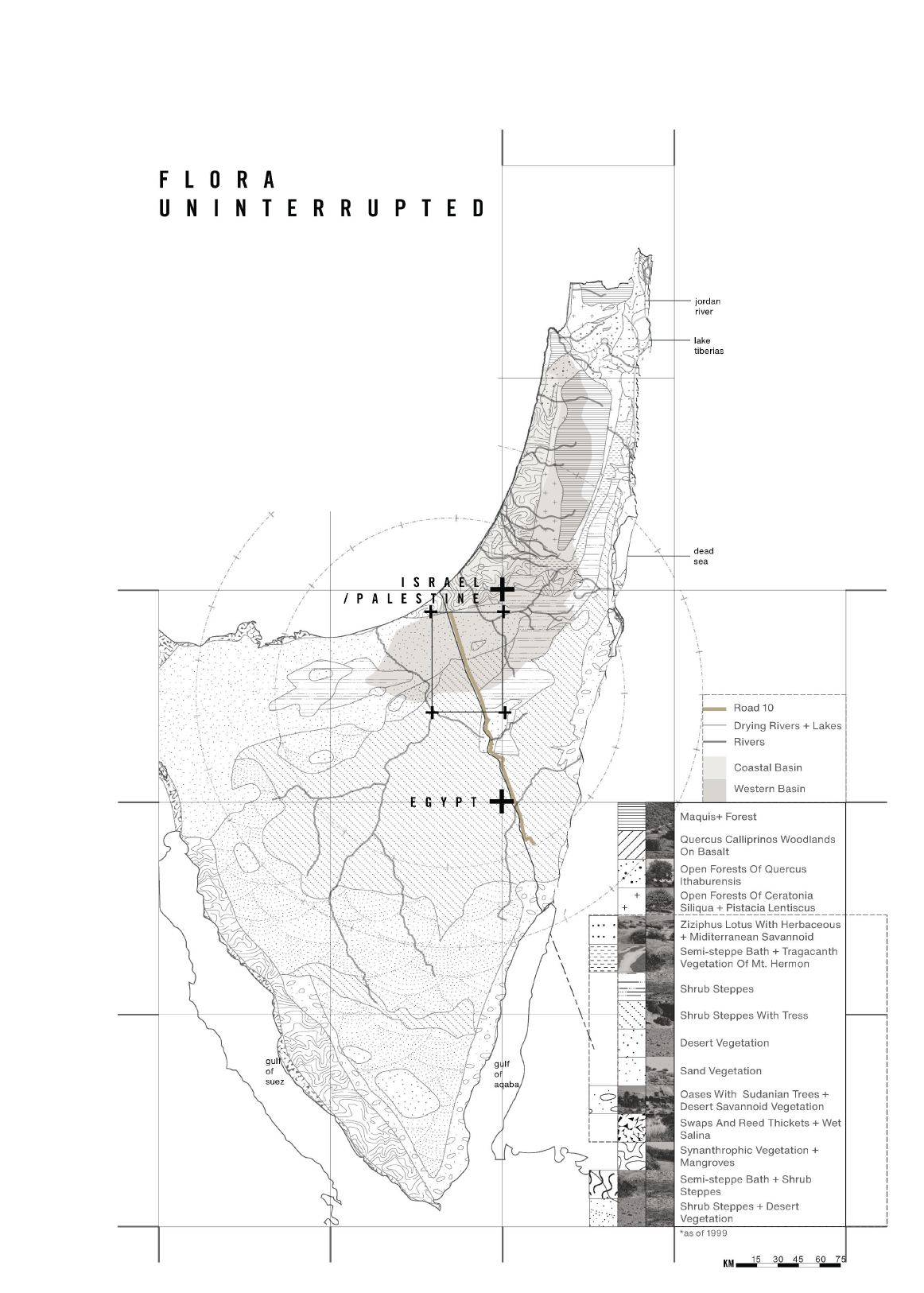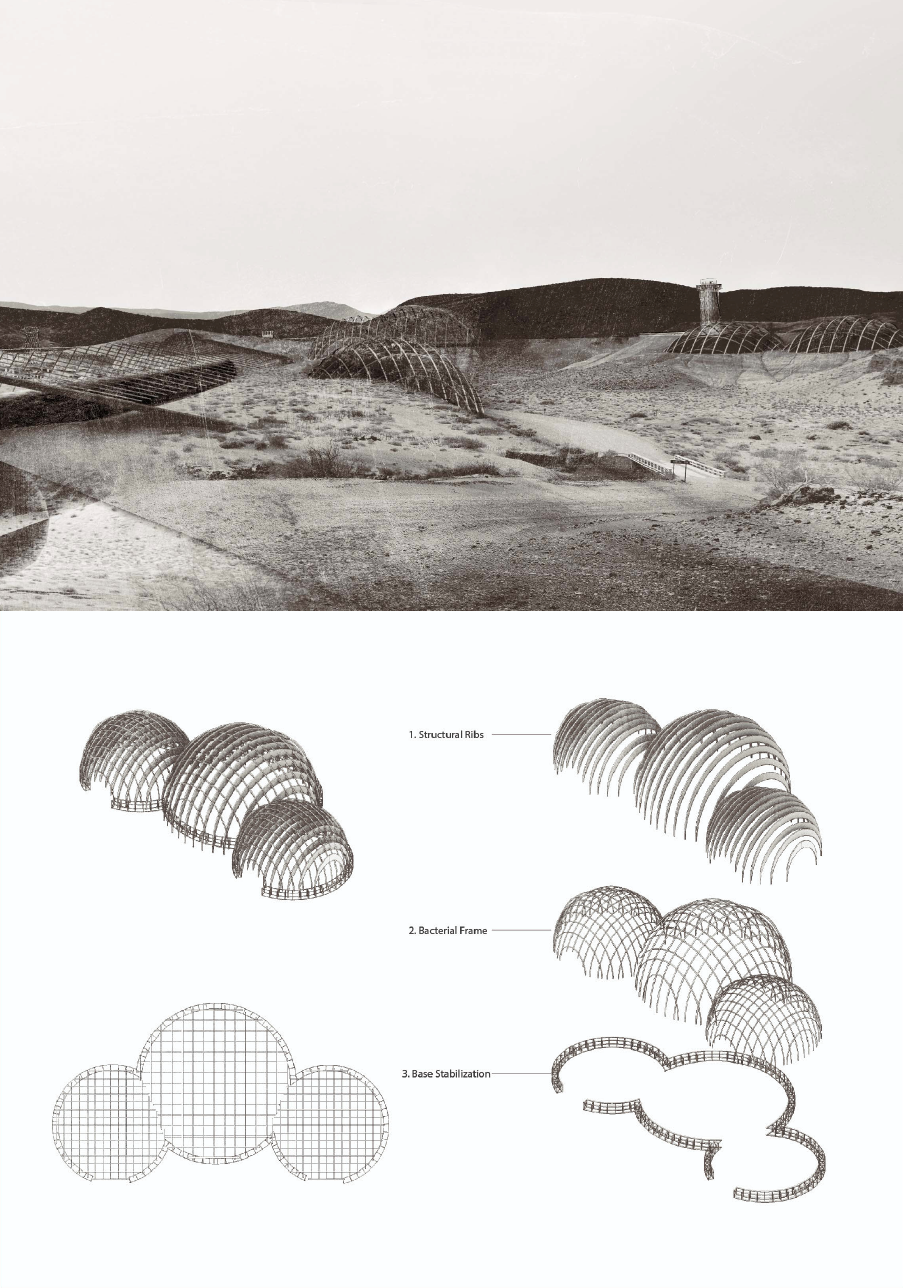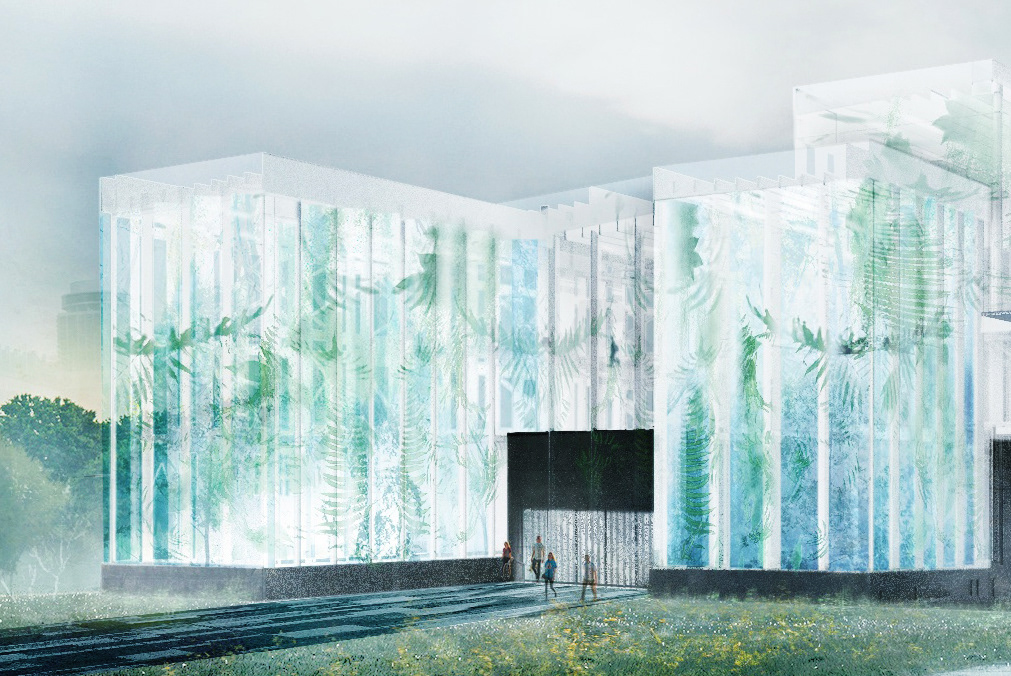Designing for Division
The Negev/Naqab meets an over 245-kilometre long border with Egypt. Military buffer zones extend infrastructures by one kilometre on either side of the border. Mapping exercises uncovered various kinds of passages at several scales. These extended beyond the existing border, reaching into the Sinai Peninsula, the greater Arabian Peninsula, all the way to the Sahara Desert, showing that the interruption of borders is not definitive.
The arbitrary division of a historically continuous and unified landscape has left a visible scar along the borderline, and the region’s connective elements can no longer function as part of an ecosystem.
Threshold Landscapes proposes a border region retrofit that considers the military requirements of the area while prioritizing the biotic. The result is a flip of the military buffer zone into an ecological buffer zone with opportunities for the biotic to flourish. Interventions are explored at the scale of the border wall, the outpost, and the dune, to foster and stabilize threshold ecosystems.
In collaboration with Sarah Fahmy and Natasha Lemire-Waite




Non-permeable borders disrupt natural flows of biology, geology, and hydrology. Natural reserves entangle the spaces between Egypt and Israel/Palestine. Infrastructure divides the reserves with roads, pipelines, treatment plants, and military bases. The earth is extracted for its mineral and aquatic resources, decreasing the land's ability to support an array of biotic diversity it once had. The existing border is an anthropogenic disturbance to the Negev/Naqab region. Infrastructure that is more considerate to the site conditions and provides a framework for ecological enhancement is considered moving forward.






Dune stabilization studies and permeable border intervention that rewilds barren walls through dune stabilization and strategic bio-active outposts.
Mycelium outposts and architecture exhibition installation showcasing an ecological buffer intervention for the biotic desert species disrupted by border infrastructure.





International Architecture Biennale Rotterdam
The International Architecture Biennale Rotterdam (IABR 2022) runs from September 22 to November 13, 2022, and includes exhibits by 50 designers, artists, architects, and academics.
It asks: “how can architecture respond to socioecological urgencies by considering time as a crucial factor in the design process?” Time is an essential yet neglected parameter in designing sustainable futures.
The Carleton students produced their projects between January and April 2022 in the Options Studio Threshold Landscapes — Desert Futures, coordinated by Shoshan.
Shoshan is the founding director of FAST, an Amsterdam-and-New York-based architectural think-tank that uses research, advocacy, and design to promote social, spatial, and environmental justice, equality, and solidarity. She is also Area Head of the Art, Design, and the Public Domain Master in Design Studies at the Harvard Graduate School of Design and a visiting scholar at the Institute for Public Knowledge at New York University.
According to FAST, Desert Futures: Scenarios for Decolonization aims to spatialize and make visible the tensions between political systems and natural ecologies in desert environments, as well as human attempts to commodify the desert by dividing, fortifying, mining, extracting, militarizing, polluting, and foresting it.
The project launches with an installation about the Negev/Naqab desert, presenting a materialistic historiography of a series of selected sites, detailing their rapid colonization and offering strategies for their regenerative cohabitation through interwoven stories.





